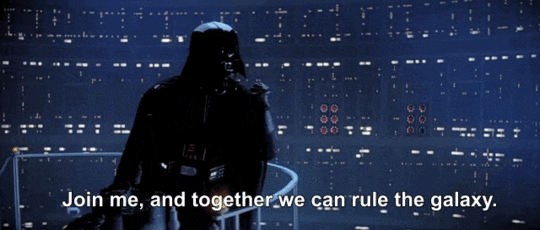I’ve been waiting a while before writing this one, as I wanted to capture the essence of why so many people confuse blockchain with distributed ledger technology.
My goal, today, is not to call-out “crypto-experts” for propagating (pun intended) misinformation, but to explain to every single one of you why understanding the proper definition of blockchain and distributed consensus matters.
As to me there is a key difference between Distributed Ledger Technology (DLTs) and blockchains, so many technologists and marketers keep forgetting: the actual monetary incentive that keeps this database operating in a decentralized manner.
There is no easy way to put it but you’ve most likely been lied to.
When you read on linkedin or twitter, posts about how private-“blockchains” such as hyperledger and alike will change supply-chain and the financial industry forever, and how this technology is going to “fix” all problems in most business sectors, you’re probably consuming bullshit.
There is no purpose in having a decentralized system controlled by a small group of people; if that is what you are looking for, why not simply using DLTs and cloud-based computing?
–this article shouldn’t be taken as financial advisement as it represents my personal opinion and views. I have savings invested in cryptocurrency so take whatever I write with a grain of salt. Do not invest what you cannot afford to lose and always read as much as possible about a project before investing. Never forget: with great power, comes great responsibility. Being your own bank means you’re always responsible for your own money—
Commonly used Data Structures
Before jumping ahead to the problem at hand: how to differentiate between blockchain and DLTs, let’s first list the most commonly used data structures.
- Arrays: an array is the simplest and most widely used data structure. Other data structures like stacks and queues are derived from arrays.
- Stacks: you store the previous states of your work (which are limited to a specific number) in the memory in such an order that the last one appears first. This can’t be done just by using arrays. That is where the Stack comes in handy.
- Queues: Similar to Stack, Queue is another linear data structure that stores the element in a sequential manner. The only significant difference between Stack and Queue is that instead of using the LIFO method, Queue implements the FIFO method, which is short for First in First Out.
- Linked Lists: a linked list is like a chain of nodes, where each node contains information like data and a pointer to the succeeding node in the chain. There’s a head pointer, which points to the first element of the linked list, and if the list is empty then it simply points to null or nothing.
- Trees: a tree is a hierarchical data structure consisting of vertices (nodes) and edges that connect them. Trees are similar to graphs, but the key point that differentiates a tree from the graph is that a cycle cannot exist in a tree.
- Graphs: a graph is a set of nodes that are connected to each other in the form of a network. Nodes are also called vertices. A pair(x,y) is called an edge, which indicates that vertex x is connected to vertex y. An edge may contain weight/cost, showing how much cost is required to traverse from vertex x to y.
- Tries (they are effectively trees, but it’s still good to call them out separately): Trie, which is also known as “Prefix Trees”, is a tree-like data structure which proves to be quite efficient for solving problems related to strings. It provides fast retrieval, and is mostly used for searching words in a dictionary, providing auto suggestions in a search engine, and even for IP routing.
- Hash Tables: hashing is a process used to uniquely identify objects and store each object at some pre-calculated unique index called its “key.” So, the object is stored in the form of a “key-value” pair, and the collection of such items is called a “dictionary.” Each object can be searched using that key. There are different data structures based on hashing, but the most commonly used data structure is the hash table.
So looking at the above we can quickly conclude the blockchain sits at the hash table level with a tree hierarchical format – this is, it contains blocks with transactions inputs and outputs (UTXO), registered and posted in a chronological order.
The important conclusion on this brief section is that other cryptocurrencies can use different types of data structures to achieve similar goals as the blockchain, yet the common denominator on all is the underlying cryptocurrency associated to it.
Blockchain: a definition
First things first; in order to correct people from saying “blockchain, not bitcoin” we should understand what just the blockchain is anyway.
Usually, people put it as the ledger where bitcoin operates; that and a bit more:
Bitcoin and its blockchain are inseparable, as one cannot exist without the other. A blockchain without cryptocurrency is nothing more than a centralized database – which can be distributed among multiple regions and nodes, via cloud computing. Plus, a cryptocurrency owned by a small group of people is just a digital currency – something we are quite familiar with.
The concept of blockchain most of you enjoy means: decentralized consensus via a distributed, permissionless and trustless protocol.
No more, no less.
See, it’s quite easy to create a private database, kept under your private nodes/servers, designed to operate much like a blockchain without the actual cryptocurrency. But that’s just it: a database (like Oracle or SQL) a private group of people own. They can give you access to read-write into that ledger but there is no decentralization whatsoever because there is no monetary incentive.
The most important part of the blockchain is what white-collar suits, like bankers and big corporations’ fat cats, are trying to kill: that small, minor, absolutely insignificant feature which gave birth to a world where decentralized money is a reality – Bitcoin.
Distributed Systems: a definition
If I had to come up with a single sentence to explain what are distributed systems (and DLTs) it would be something like: “distributed system can be thought of as multiple participants acting as one for an external user”. It may consist of multiple moving parts, taking different roles at different times, covering for one another, cooperating, relaying messages, storing information for other party temporarily, but in the end all these parts serve the same purpose.
Another way to think about a distributed system is: we have several participants (Processes) and Links between them.
How are DLTs any different from the blockchain?
Without going into many technicalities, a DLT or distributed ledger technology is just a bunch of redundant databases spread across different regions (think of cloud-computing or ERP systems). The point of DLTs is to have the same data spread across multiple servers, which can be accessed and updated at any single point in time and has certain time-stamps, so it follows a chronological order.
A central authority (system admin) gives different permissions to different sets of users (via roles), which grant them access to a common system (or ledger) that they can update.
Fascinating, right?
The blockchain, however, shouldn’t be put into the same box as DLTs as it contains different properties; actually, DLTs should maybe be called Distributed Databases, just to avoid people thinking the word “ledger” refers to an actual ledger; storing data can take many formats, hence this blockchain is simply a data structure – think of IOTA’s and Circle’s Directed Acyclical Graph or Hashgraph’s ledger as other examples of alternative structures.
The brilliance of the first (and all) blockchain is that it possesses a cryptocurrency associated to it. It’s that said cryptocurrency which functions as means of payment between the user, being the person who wants to write up some data into that ledger, and the miner, being the person who registers that data into the ledger and also validates and secures it.
Without cryptocurrency there would be no incentive for the miner to keep the ledger secure!
As you can see, the difference is that although both DLTs and Blockchain have distributed infrastructure, the later also decentralizes governance and ownership – data becomes yours as long as you have a key to open the door.
DLTs vs Blockchain
Shall we go deeper into the rabbit hole? Wonderful!
Why do so many people confuse blockchain with DLTs, then?
The answer is quite simple: because most people don’t understand this technology or its purpose. Luckly for me and some of you, we live in places where money is more or less stable (except during financial crisis which almost never happen, lol); meaning, we don’t really see a reason for this technology to be.
We had to get into the blockchain hype without a real need, so we created ideas and concepts of how this decentralized technology could potentially change every aspect of our lives.
As I mentioned in the beginning, the blockchain hype seems to be associated to a bunch of different activity sectors. From land-registry, to finance, people go nuts over this.
“It will make everything faster!”, they say.
“It will change commerce forever!”, they say.
But when you ask those same people about Bitcoin, they blast away saying “Bitcoin is just a hype” and the real value is on the database Bitcoin operates in, the blockchain.
How can that make any sense, seriously?!
Is the real value of this technology (a) the fact it introduces a cryptocurrency which allows us to decentralize everything, or (b) the database that keeps that information safe?
The funny thing is that both (a) and (b) need Bitcoin to actually function (in a decentralized way), so that was just a trick question for all of you naysayers.
What I mean is that there is little purpose in having just half of this wonderful technology working for you, while the other half is stripped away of its awesome properties.
The central problem of the whole misconception around “Blockchain vs DLTs”, is that people use the concept of decentralized consensus protocol to speak about the blockchain – which is one of many different ways to arrange information in a data structure.
The blockchain today

The key to power is knowing how to keep it.
Google and Microsoft were once disruptive companies trying to change the world, each at its own peculiar way. I believe they managed to accomplish just that, by allowing billions of people to access information cheaply. But that information is being kept under their close watch and now it’s time to pay the piper.
There’s some new regulation, like the GDPR, which is trying to tackle that exact same problem, although at the end – as it is usual with EU laws – it will make the whole internet way more inefficient and information hacking problems will continue to take place. At the end, information will remain stored at the same places as it were before: in private companies’ servers.
Did those cookie agreements stopped cookies from being stored in your web-browsers? Nope.
They just made navigating through the web even more painful and time-consuming.
More however, we aren’t truly benefiting from our data being stored in so many different places, as well as, not getting properly rewarded for participating in most networks.
If information is power, then the ones holding it are the truly powerful ones, right? Instead of you making money from the websites you visit or from your online behavior, some company is compiling that information into a nice and presentable package and selling it to the highest bidder.
Sure, now companies need to give you back your data privacy, so you think you are in charge.
Except, how can the EU or any enforcer actually verify those claims? With the abundance of websites, from different jurisdictions, it won’t be an easy task to ensure companies are really deleting user data or they’re not selling it without permission.
Is creating regulation around user data the solution for information mismanagement or data breaches?
The Power Of Decentralization

Probably a cleaner and simpler answer is to build products which give back the power to users, instead of forcing companies to make website navigation even worse (those cookies warnings are so pointless) and to follow rules which are difficult to enforce.
That’s precisely the goal of Bitcoin.
Is there anything special about that blockchain ledger?
Not really. As we discussed above, it’s simply a data-structure, kind of like a giant excel spreadsheet, which keeps track of how much each one owns.
What do you need to access that spreadsheet?
Bitcoin.
Without cryptocurrency there would be no way to write into the blockchain, because as it is a decentralized network, it needs some sort of currency people pay to secure their information – which in this case is how much money they own.
But wait! There’s more!
We will soon discuss why it’s so important to believe in the power of decentralization, but first, what do you think it needs to happen for cryptocurrency mass adoption to take place?
Is it a technical problem? Like scalability which is usually represented by the umber of transactions per second?
Or could it be a philosophical issue? Like the fact it’s hard to earn/get cryptocurrency, because companies still ask you to purchase some token instead of giving them away as rewards for user participation?
The Killer App For Cryptocurrency
If we want to understand how this decentralized ledger can change the world, we need to think about its properties and how they can be applied to most businesses.
As you know, decentralization means more people can participate in all aspects of governance; if you had to guess, does the democratic system seem efficient to you?
That’s because it isn’t. There is really no way to allow for a better redistribution of wealth while at the same time having the most efficient system in place.
It makes little sense for most organizations to swap from typical IT infrastructures to a blockchain-based system – unless their goal is to decentralize value somehow.
We arrive, then, at two important conclusions:
- DLTs are great for centralized organizations and products,
- Blockchains are great for decentralized organizations and products.
Now that the whole picture is starting to take shape, we can begin to understand what the killer app might be: something that changes how organizations are structured and value is created.
By combining the power of a distributed infrastructure with decentralized governance and autonomous consensus rules that enable trust between peers, we achieve a completely new and ground-breaking way to create and distribute value.
Not only money, but literally anything we want.
Sure, it will be awesome to track products’ origin on a public ledger, or having my identity securely stored somewhere only I can access; I’m really excited about all those incrediblet use-cases. Yet, at least to me, the real disruptive nature of the blockchain is how we can now better distribute value among a network.
The path to the new internet must be paved with a new meaning to earning value.
Hum…
But how would that look like?
The Web 3.0

Right now there are hundreds of projects creating decentralized versions of known platforms as Google, Twitter, Facebook or Linkedin. Some projects like Steemit, The Brave browser or Wabi’s milk tracking app, already have deployed real-life applications running in a decentralized manner.
The trick for any product, platform or company creating a decentralized network is to properly implement incentives so that most benefits go to users.
Why wouldn’t you like to get paid for your online contributions? Or to share your data with third-parties? What if we start valuing everything that we do online?
The reason why blockchain technology is needed won’t be truly understood by most until we reach the point when we don’t remember how it used to be without its existence.
Just like the Internet or mobile phones.
The blockchain we know today, as a database or a ledger used to store bitcoin, will change in the next upcoming years as more people create ways to decentralize value distribution. Maybe all blockchains will interact with the Bitcoin blockchain and it will remain a standard, as it was the first.
Or not.
The point is, whatever blockchain remains, we need to change how we measure value in order to allow for this technology to grow. The more we fight to keep it under a central authority, the harder it will be to leave that mind-set.
If tokens can represent virtually anything, sooner or later companies will start tying those into their business models and shifting from gaining value from users to giving value to users. As long as there is a token representation of a certain company, product or idea there are different ways to move from a centralized structure to a network, where all token holders benefit equally.
If our vision is to decentralize value, is there a better way to do it then changing how we earn it?
The Web 3.0 is nothing but a brand new way for organizations to give value back to users (the rightful owners of said value).
Why enrich the few when we can enrich the many?
If the ultimate goal is to better redistribute value, there is definitely no blockchain without Bitcoin.
Sorry to disappoint!
As I mentioned in the beginning, the reason I’m writing on this topic is to clear out the confusion between DLTs and Blockchain – my goal is not to undermine anyone who thinks differently; I do, however, want you to know that any technology can have good and bad outcomes. If we use the blockchain associated to centralized digital monies, then we’re giving away all our privacy to some third-party. If we do the opposite we’re taking back what’s rightfully ours – the ability to exchange value freely online, which to me is the only way to use this technology.
If you have a different view on the subject, please, don’t forget to let me know.
Any comments, feedback or ideas are always welcome!
Connect with me on twitter @febrocas!
Follow us on Telegram or subscribe to our newsletter here.
• Join CCN’s crypto community for $9.99 per month, click here.
• Want exclusive analysis and crypto insights from Hacked.com? Click here.
• Open Positions at CCN: Full Time and Part Time Journalists Wanted.








